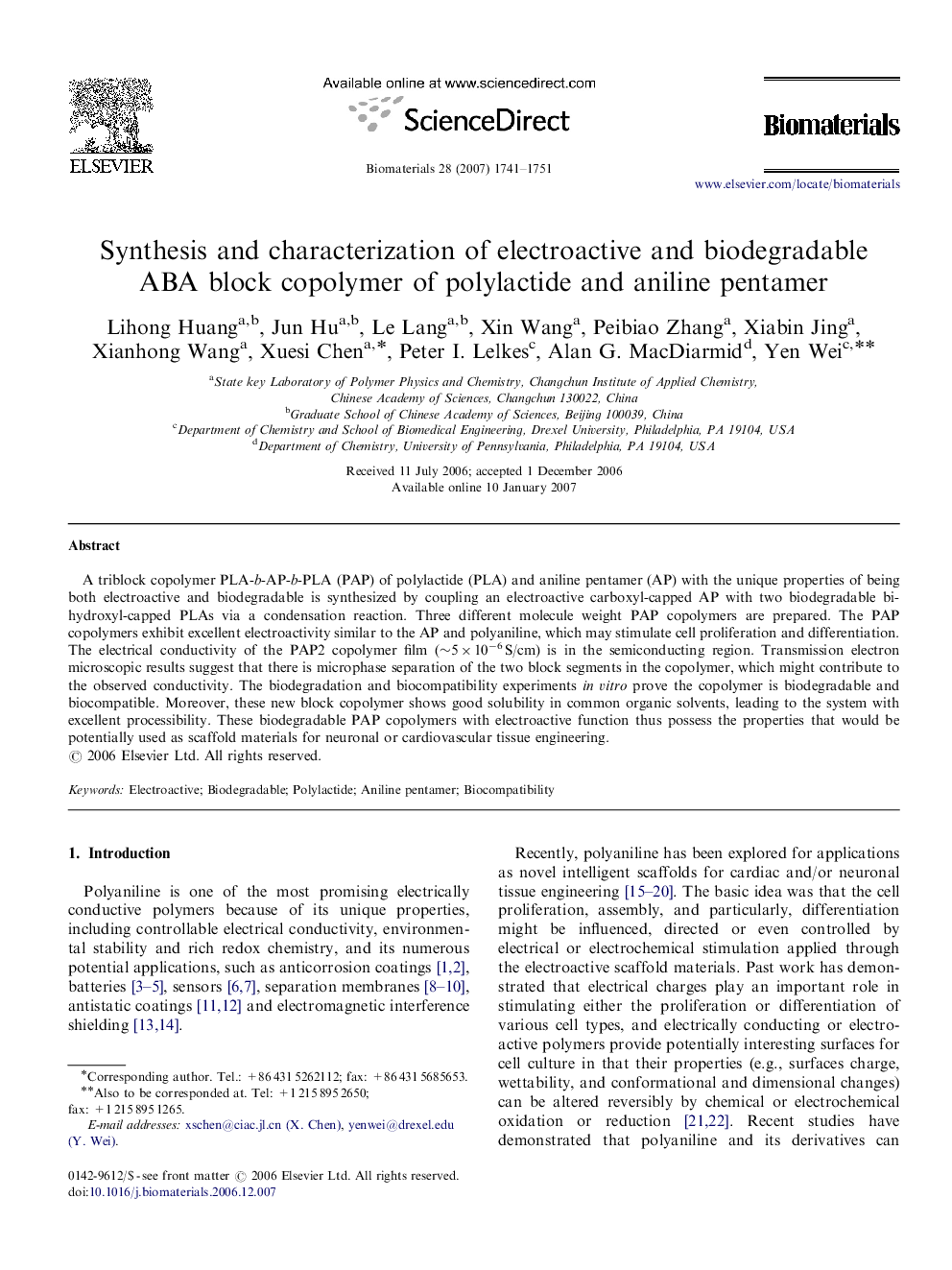| Article ID | Journal | Published Year | Pages | File Type |
|---|---|---|---|---|
| 10309 | Biomaterials | 2007 | 11 Pages |
A triblock copolymer PLA-b-AP-b-PLA (PAP) of polylactide (PLA) and aniline pentamer (AP) with the unique properties of being both electroactive and biodegradable is synthesized by coupling an electroactive carboxyl-capped AP with two biodegradable bi-hydroxyl-capped PLAs via a condensation reaction. Three different molecule weight PAP copolymers are prepared. The PAP copolymers exhibit excellent electroactivity similar to the AP and polyaniline, which may stimulate cell proliferation and differentiation. The electrical conductivity of the PAP2 copolymer film (∼5×10−6 S/cm) is in the semiconducting region. Transmission electron microscopic results suggest that there is microphase separation of the two block segments in the copolymer, which might contribute to the observed conductivity. The biodegradation and biocompatibility experiments in vitro prove the copolymer is biodegradable and biocompatible. Moreover, these new block copolymer shows good solubility in common organic solvents, leading to the system with excellent processibility. These biodegradable PAP copolymers with electroactive function thus possess the properties that would be potentially used as scaffold materials for neuronal or cardiovascular tissue engineering.
